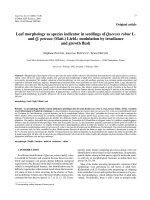Modulation Evan Everett and Michael Wu ELEC 433 - Spring 2013
Bạn đang xem bản rút gọn của tài liệu. Xem và tải ngay bản đầy đủ của tài liệu tại đây (554.76 KB, 17 trang )
Modulation
Evan Everett and Michael Wu
ELEC 433 - Spring 2013
Questions from Lab 1?
Modulation
•
Goal: overlay data onto carrier signal (sinusoid)
•
Sinusoids have two very accessible parameters
•
Modulate amplitude and phase
x (t)=A sin(ωt + φ)
Data
Modulation
Carrier
10100
Modulation
•
Goal: overlay data onto carrier signal (sinusoid)
•
Sinusoids have two very accessible parameters
•
Modulate amplitude and phase
Data
Modulation
10100
Why not?
1) Interference avoidance
2) High freq → small antennas
Signal Representation: Phasor
•
Polar: Amplitude & Phase
•
Rectangular: “In-phase” (I) & “Quadrature” (Q)
Phase
Amplitude
0
π/2
π
-π/2
I
Re[x]
Q
Im[x]
x(t)=A sin(ωt + φ)
x(t)=I cos(ωt)+Q sin(ωt)
I = A sin(φ )
Q = A cos(φ)
Signal Representation
•
Rectangular (I,Q) form suggests a practical implementation
cos(ωt )
sin(ωt )
I
Q
90˚
I cos(ωt)+Q sin(ωt)
I
Re[x]
Q
Im[x]
•
Modulation = mapping data bits to (I,Q) values
10100
Digital Modulation
•
Maps bits to complex values (I/Q) (focus of the Lab 3)
•
Complex modulated values are called “symbols”
•
Set of symbols is called “constellation” or “alphabet”
•
# of symbols in constellation is “modulation order”, M
•
M-order constellation can encode ______ bits per symbol
[10][01]
[11][00]
Digital Modulation
•
Maps bits to complex values (I/Q) (focus of the Lab 2)
•
Complex modulated values are called “symbols”
•
Set of symbols is called “constellation” or “alphabet”
•
# of symbols in constellation is “modulation order”, M
•
M-order constellation can encode log
2
(M) bits per symbol
[10][01]
[11][00]
Phase Shift Keying (PSK)
•
Encodes information only in phase
•
Constant power envelope
•
Pros: no need to recover amplitude, no need for linear amplifier
•
Con: wastes amplitude dimension
BPSK (M =2) QPSK (M =4) 8-PSK (M =8)
[1][0]
[01][00]
[11][10]
[000]
[001]
•
Encodes information in both amplitude and phase
•
(I,Q) grid
Quadrature Amplitude Modulation (QAM)
∈
√
M ×
√
M
4-QAM 16-QAM 64-QAM
802.11b
802.11g/n
802.11ac
16-QAM
64-QAM
256-QAM
•
Common in wideband systems:
Bit-to-Symbol Mapping
•
Confusing with neighbor is most likely error
•
Best to minimize bit-difference between neighbors
•
Gray Coding
•
Neighboring symbols differ by only one bit
•
Extra performance at zero cost (this is rare!)
[10][01]
[11][00]
[11][01]
[10][00]
Natural-coded
QPSK
Gray-coded
QPSK
Tradeoff: Rate vs. Error Probability
•
By increasing modulation order, M, we get:
•
More data in same bandwidth :)
•
Lower noise tolerance (i.e. higher error probability) :(
•
Therefore, SNR dictates feasible constellation size
QPSK: 2 bits/symbol
I
Q
QPSK: 2 bits/symbol
I
Q
16-QAM: 4 bits/symbol
I
Q
64-QAM: 6 bits/symbol
I
Q
1E-09
1E-08
1E-07
1E-06
1E-05
1E-04
1E-03
1E-02
1E-01
1E+00
0 2 4 6 8 10 12 14 16 18
BER
BPSK
QPSK
8-PSK
16-QAM
64-QAM
E
b
/N
0
(dB)
Bit error rate (BER) vs. SNR per bit (E
b
/N
0
)
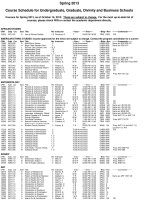

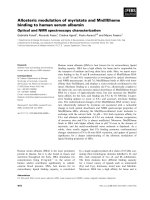
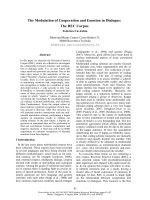


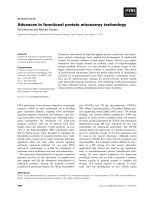

![appcelerator titanium - up and running - j. anderson (o'reilly, 2013) [ecv] ww](https://media.store123doc.com/images/document/14/y/rt/medium_rtm1399115387.jpg)
